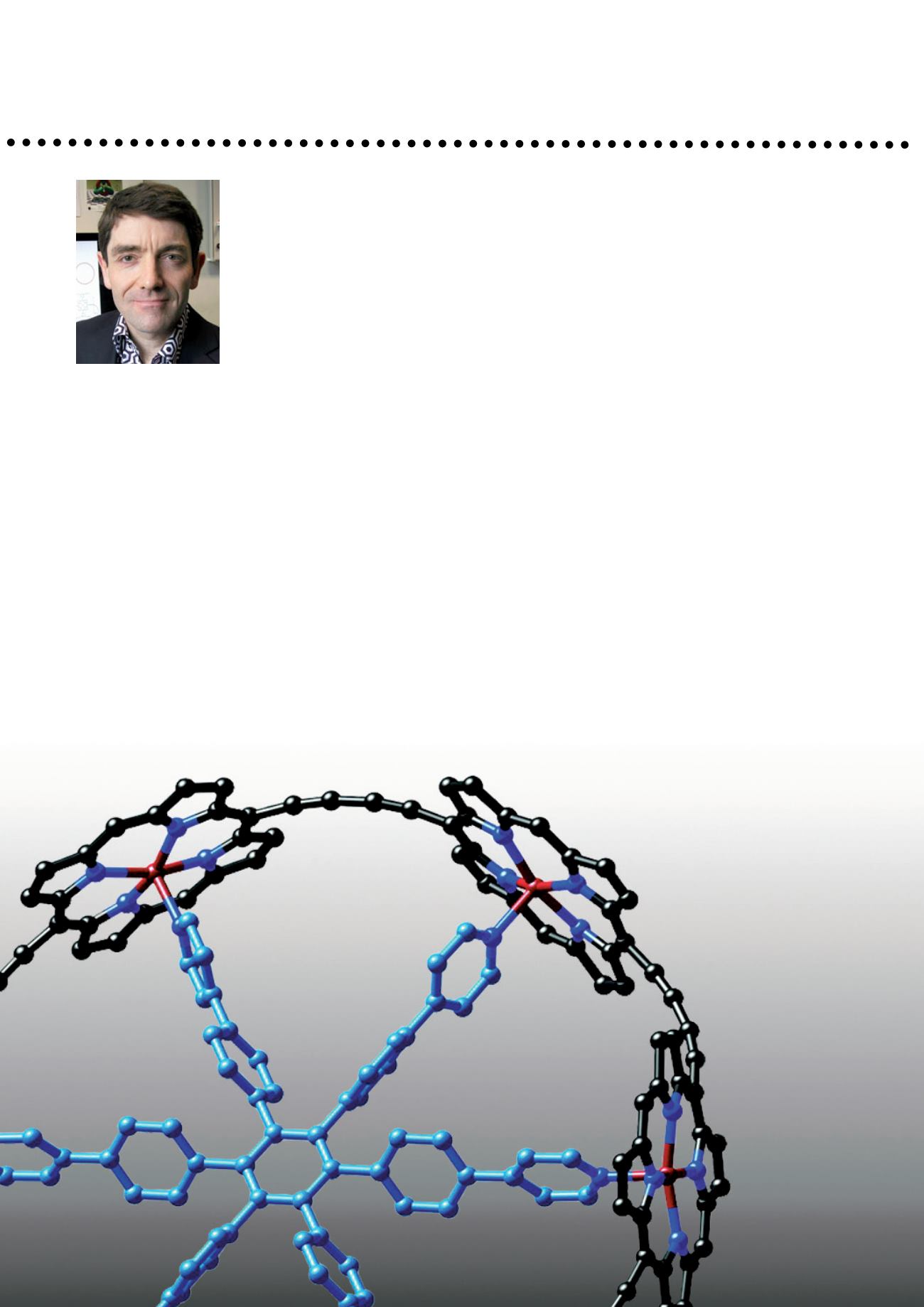
10
The Keble Review 2013
arry Anderson is a familiar face around
Keble, having taught organic chemistry
to our undergraduates for almost two
decades. Harry is also one of the world’s leading
exponents of supramolecular chemistry, and it was
for his research in this field that he was elected to a
Fellowship of the Royal Society. His research is broad
in scope and application, ranging from the esoteric
to the clinically applied, and covering the chemical
disciplines to touch engineering and the biomedical
sciences.
Supramolecular chemistry is essentially the study
of how molecules interact with one another: it
involves exploiting many weak interactions that act
in concert, and can be used to assemble complicated
edifices in the same kind of way that a model can
be made from Lego bricks. One key challenge in
the field is to develop ways by which molecules
(unlike Lego bricks!) assemble themselves so that
they produce the same pattern every time without
human interference. Harry has let his chemical
imagination run riot here, producing some beautiful
patterns along the way. For instance, his group
have devised methods for building ‘nano rings’ that,
despite their name, are very large structures indeed.
In a normal chemical context, it is very difficult to
persuade the opposite ends of a long molecule to
meet- let alone join together. Harry’s approach to
achieving this goal is essentially that of a molecular
wheelwright: by building a series of spokes out
from a hub, it is possible to attach sections of the
wheel rim to individual spokes before joining them
all together. This is now an easy task, since the
ends of each piece of the rim will be close to one
another. Harry’s success in the assembly of such
architectures stems from developing effective
ways of translating such familiar concepts on the
‘everyday’ scale down to the molecular level. It
has required him to harness chemical synthesis,
kinetics and thermodynamics and methods for
characterising and understanding them.
Harry also has interests in the application of his
molecular architectures, and was one of the founder
members of the Keble Imaging Cluster of the
Advanced Studies Centre. He has been exploring
the preparation and application of molecules that
can be used to image electrical impulses in cell
membranes (with implications for understanding
the nervous system and the nature of muscle
action). These work by the way in which they
interact with light - converting low energy infrared
light into higher energy visible light only when
embedded in membranes. Beyond imaging, Harry
has been exploring the usefulness of some of his
porphyrin containing molecules in the photodynamic
therapy of cancer and exploring and evaluating the
development of light activated drugs.
From the start of academic year 2013-14 Harry
becomes a Professorial Fellow at Keble. He will still
be actively involved in the Imaging Cluster and
inspiring undergraduates and graduates
in the field of organic chemistry.
Professor Harry Anderson
Professor Harry
Anderson,
Professorial Fellow
in Chemistry, was
elected to the
Fellowship of the
Royal Society in
May 2013. Fellows
are elected by
peer review from
the most eminent
scientists, engineers
and technologists
from the UK and the
Commonwealth.
h
Partial view of a
nano ring, with the
hub and spokes
shown in blue and
the assembled rim
predominantly in
black. Note how
chains of atoms link
the porphyrin rings
together.
Professor Steve Faulkner
Fellow in Chemistry


